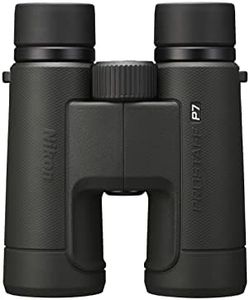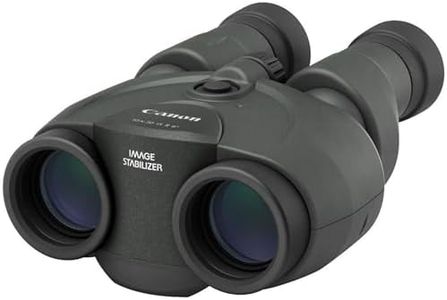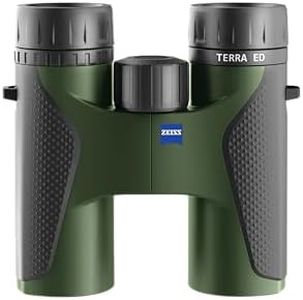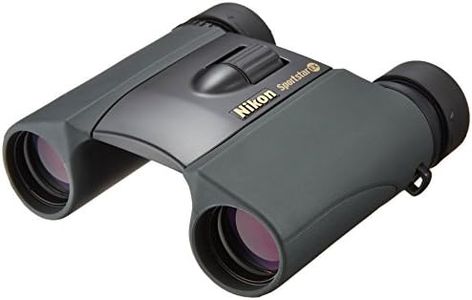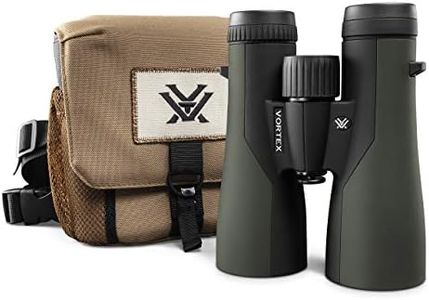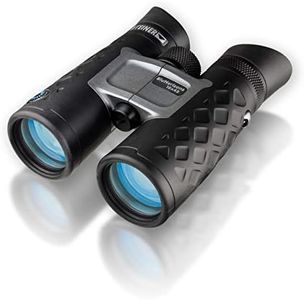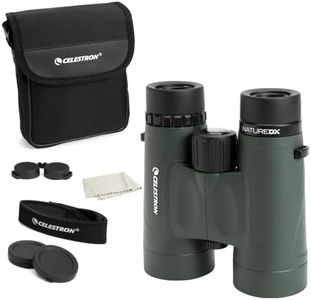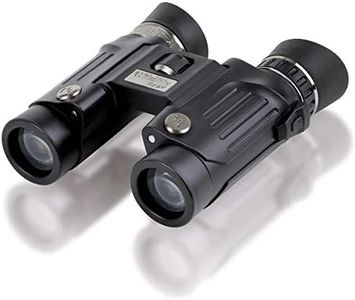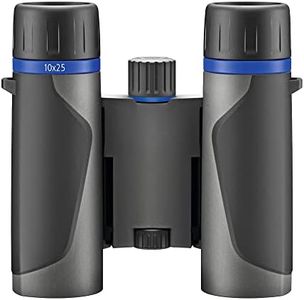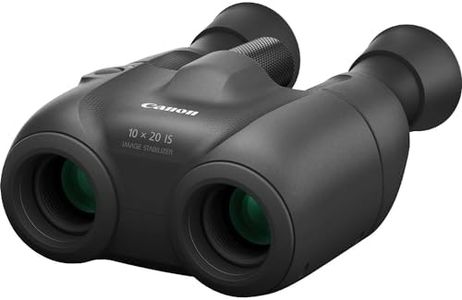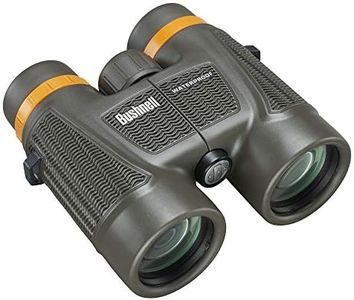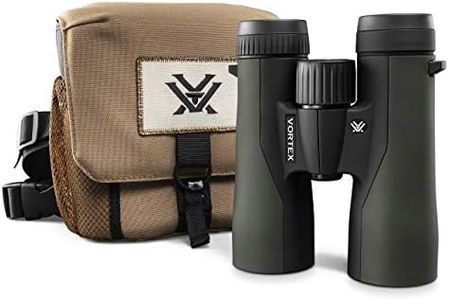We Use CookiesWe use cookies to enhance the security, performance,
functionality and for analytical and promotional activities. By continuing to browse this site you
are agreeing to our privacy policy
10 Best Travel Binoculars For Cruise
From leading brands and best sellers available on the web.Buying Guide for the Best Travel Binoculars For Cruise
Choosing travel binoculars for a cruise is all about finding the right balance between portability and performance. Cruises offer breathtaking views—whether it’s spotting distant islands, watching marine life, or appreciating coastal scenery—so you’ll want binoculars that are easy to carry but still give you vivid, clear images. Knowing what features to look for will help you find binoculars that enhance your cruising experience without becoming a burden in your luggage.Magnification and Objective Lens DiameterThis specification is typically written as something like 8x25 or 10x30. The first number refers to the magnification power—that is, how many times closer the object appears compared to the naked eye. The second number is the diameter of the objective lenses (the big lenses in front) in millimeters, which affects how much light enters the binoculars. For cruises, a moderate magnification (like 7x or 8x) is often ideal because it provides enough zoom for distant views but isn’t as shaky to hold as higher magnifications. Larger objective lenses mean brighter images, but also more weight and bulk, so most travelers choose lenses in the 20–32mm range for portability. Select the combination that suits how much you value lightness versus brightness—casual sightseeing usually doesn’t require very large lenses.
Weight and SizeBinoculars come in a range of weights and sizes, from compact pocket-friendly options to heavier models meant for serious wildlife watchers. On a cruise, you’ll be walking the decks, possibly exploring ports, and might want to pack light, so smaller and lighter binoculars are usually best. Compact binoculars are easy to carry everywhere and fit into bags or even jacket pockets, but might not provide the brightest view at dusk or dawn. Mid-size binoculars are somewhat larger and may hang comfortably around your neck for longer periods. Think about whether you want to keep your binoculars on hand all the time or just use them occasionally—if it’s the former, prioritize lightness.
Water and Fog ResistanceThis refers to how well the binoculars handle moisture and changes in temperature. Since you’ll be near water and exposed to varying weather conditions on a cruise, water resistance is a key feature. Waterproof binoculars prevent internal fogging if they get splashed or if you move between air-conditioned cabins and humid decks. Some models are specifically labeled as both waterproof and fog-proof. Make sure your binoculars can handle the environment—if you expect rain or sea spray, or if you want to avoid any concerns about misting up, go for a model designed for outdoor use.
Field of ViewThe field of view is how wide an area you can see through the binoculars without moving them. It’s usually measured in degrees or in feet at 1,000 yards/meters. A wider field of view makes it easier to spot things, track moving objects like birds, or scan ocean horizons. For cruises, a moderate to wide field of view (around 300 feet at 1,000 yards or more) helps you enjoy panoramic vistas and quickly find points of interest. If you mainly want to focus on individual animals at a distance, a narrower field might be fine—but for general scenery, wider is usually better.
Ease of Focus and Eyecup DesignFocusing mechanisms and eyecup types affect how comfortable and user-friendly your binoculars are, especially if you wear glasses. Most modern binoculars have a central focusing wheel and adjustable eyecups that can twist up or fold down. This allows for a clear image whether or not you wear glasses. Make sure the focusing wheel is smooth and easy to adjust, and that the eyecups suit your needs. If you share binoculars with others, or use them for both quick glances and long observation sessions, comfort and adjustability will make a big difference.
